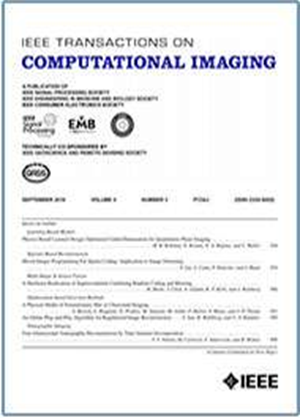Distributed Stochastic Optimization of a Neural Representation Network for Time-Space Tomography Reconstruction
IF 4.2
2区 计算机科学
Q2 ENGINEERING, ELECTRICAL & ELECTRONIC
引用次数: 0
Abstract
4D time-space reconstruction of dynamic events or deforming objects using X-ray computed tomography (CT) is an important inverse problem in non-destructive evaluation. Conventional back-projection based reconstruction methods assume that the object remains static for the duration of several tens or hundreds of X-ray projection measurement images (reconstruction of consecutive limited-angle CT scans). However, this is an unrealistic assumption for many in-situ experiments that causes spurious artifacts and inaccurate morphological reconstructions of the object. To solve this problem, we propose to perform a 4D time-space reconstruction using a distributed implicit neural representation (DINR) network that is trained using a novel distributed stochastic training algorithm. Our DINR network learns to reconstruct the object at its output by iterative optimization of its network parameters such that the measured projection images best match the output of the CT forward measurement model. We use a forward measurement model that is a function of the DINR outputs at a sparsely sampled set of continuous valued 4D object coordinates. Unlike previous neural representation architectures that forward and back propagate through dense voxel grids that sample the object's entire time-space coordinates, we only propagate through the DINR at a small subset of object coordinates in each iteration resulting in an order-of-magnitude reduction in memory and compute for training. DINR leverages distributed computation across several compute nodes and GPUs to produce high-fidelity 4D time-space reconstructions. We use both simulated parallel-beam and experimental cone-beam X-ray CT datasets to demonstrate the superior performance of our approach.时空层析重建神经表示网络的分布随机优化
利用x射线计算机断层扫描(CT)对动态事件或变形物体进行四维时空重建是无损评价中的重要逆问题。传统的基于反向投影的重建方法假设物体在数十或数百个x射线投影测量图像(连续有限角度CT扫描的重建)的持续时间内保持静止。然而,对于许多原位实验来说,这是一个不切实际的假设,会导致虚假的人工制品和不准确的物体形态重建。为了解决这个问题,我们提出使用分布式隐式神经表示(DINR)网络进行4D时空重建,该网络使用一种新的分布式随机训练算法进行训练。我们的DINR网络通过迭代优化其网络参数来学习在输出处重建目标,使测量的投影图像与CT前向测量模型的输出最匹配。我们使用前向测量模型,该模型是在稀疏采样的连续值4D对象坐标集上的DINR输出的函数。与之前的神经表示架构不同,我们在每次迭代中只在物体坐标的一小部分上传播DINR,从而减少了内存和训练计算的数量级。DINR利用跨多个计算节点和gpu的分布式计算来生成高保真的4D时空重建。我们使用模拟平行束和实验锥束x射线CT数据集来证明我们方法的优越性能。
本文章由计算机程序翻译,如有差异,请以英文原文为准。
求助全文
约1分钟内获得全文
求助全文
来源期刊

IEEE Transactions on Computational Imaging
Mathematics-Computational Mathematics
CiteScore
8.20
自引率
7.40%
发文量
59
期刊介绍:
The IEEE Transactions on Computational Imaging will publish articles where computation plays an integral role in the image formation process. Papers will cover all areas of computational imaging ranging from fundamental theoretical methods to the latest innovative computational imaging system designs. Topics of interest will include advanced algorithms and mathematical techniques, model-based data inversion, methods for image and signal recovery from sparse and incomplete data, techniques for non-traditional sensing of image data, methods for dynamic information acquisition and extraction from imaging sensors, software and hardware for efficient computation in imaging systems, and highly novel imaging system design.
 求助内容:
求助内容: 应助结果提醒方式:
应助结果提醒方式:


